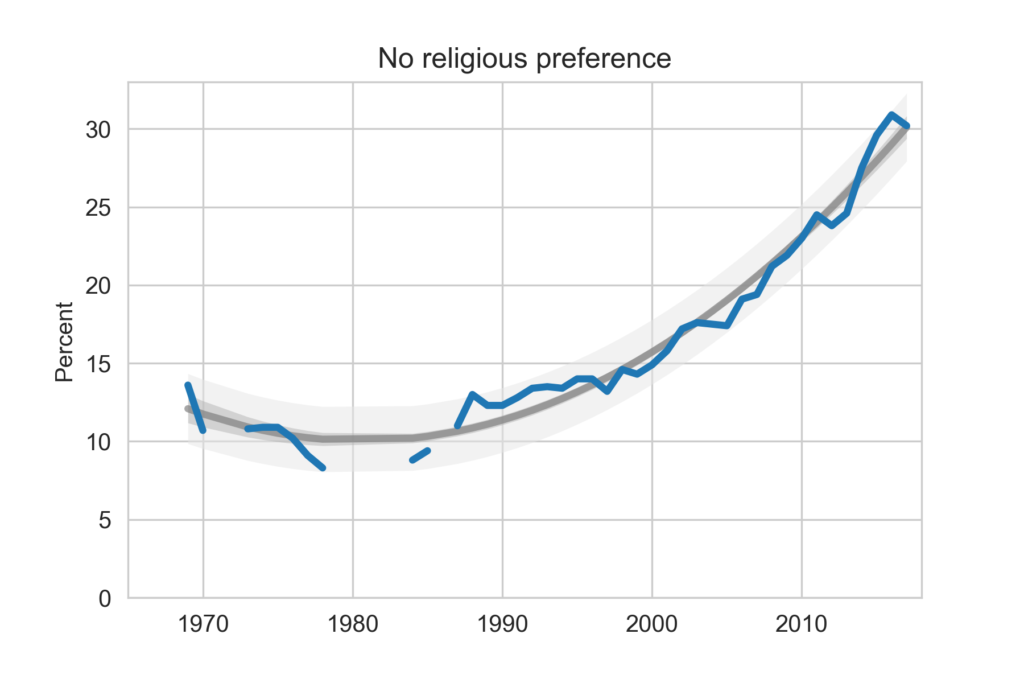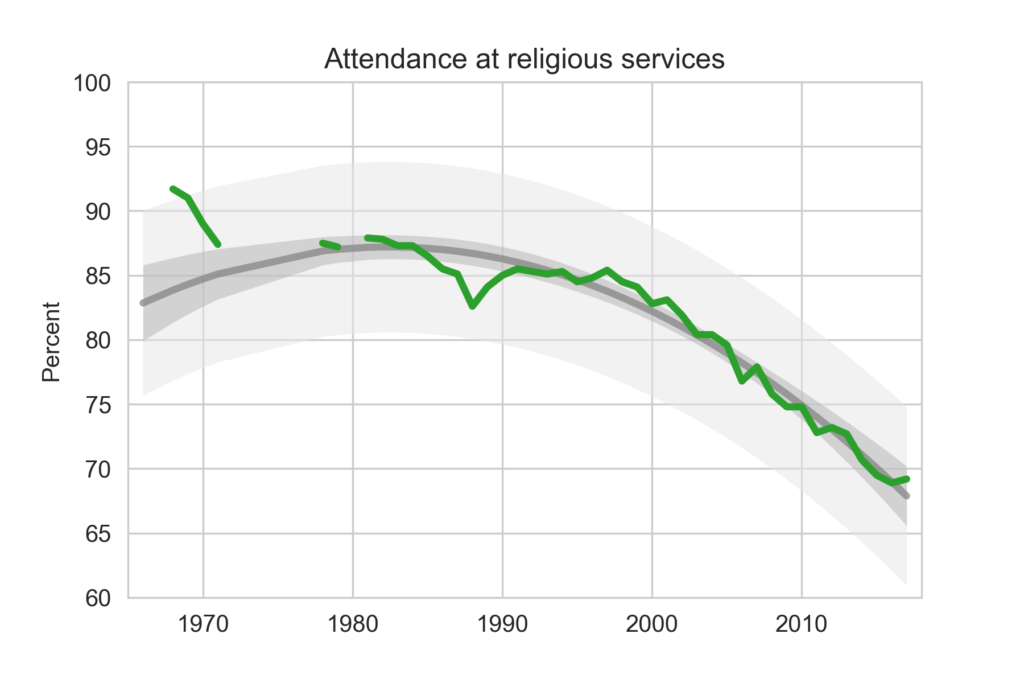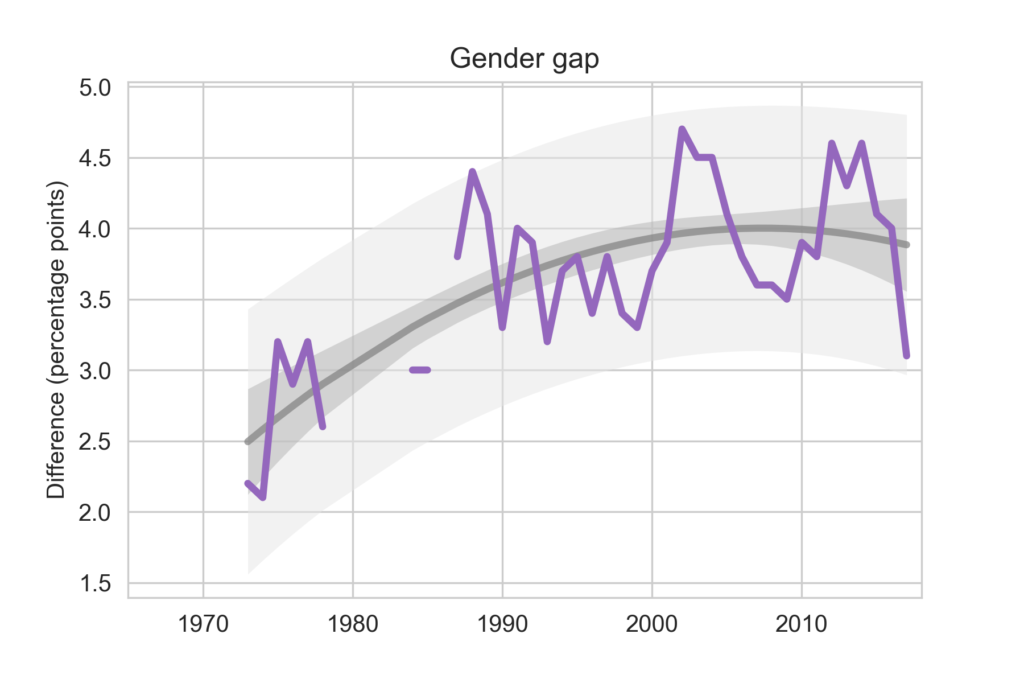Backsliding on the path to godlessness
In the last 30 years, college students have become much less religious. The fraction who say they have no religious affiliation tripled, from about 10% to 30%. And the fraction who say they have attended a religious service in the last year fell from 85% to 70%.
I’ve been following this trend for a while, using data from the CIRP Freshman Survey. The most recently published data is from “120,357 first-time, full-time students who entered 168 U.S. colleges and universities in the fall of 2017.”
One of the questions asks students to select their “current religious preference,” from a choice of seventeen common religions, “Other religion,” “Atheist”, “Agnostic”, or “None.”
The options “Atheist” and “Agnostic” were added in 2015. For consistency with previous years, I compare the “Nones” from previous years with the sum of “None”, “Atheist” and “Agnostic” since 2015.
The following figure shows the fraction of Nones over the 50 years of the survey.

The blue line shows actual data through 2017; the gray line shows a quadratic fit. The light gray region shows a 90% predictive interval.
For the first time since 2011, the fraction of Nones decreased this year, reverting to the trend line.
Another question asks students how often they “attended a religious service” in the last year. The choices are “Frequently,” “Occasionally,” and “Not at all.” Students are instructed to select “Occasionally” if they attended one or more times.
Here is the fraction of students who reported any religious attendance in the last year:

Slightly more students reported attending a religious service in 2017 than in the previous year, contrary to the long-term trend.
Female students are more religious than male students. The following graph shows the gender gap over time, that is, the difference in percentages of male and female students with no religious affiliation.

The gender gap was growing until recently. It has shrunk in the last 3-4 years, but since it varies substantially from year to year, it is hard to rule out random variation.
Data from 2018 should be available soon; I’ll post an update when I can.
Data Source
The American Freshman: National Norms Fall 2017
Stolzenberg, E. B., Eagan, M. K., Aragon, M. C., Cesar-Davis, N. M., Jacobo, S., Couch, V., & Rios-Aguilar, C.
Higher Education Research Institute, UCLA.
Apr 2019
This and all previous reports are available from the HERI publications page.